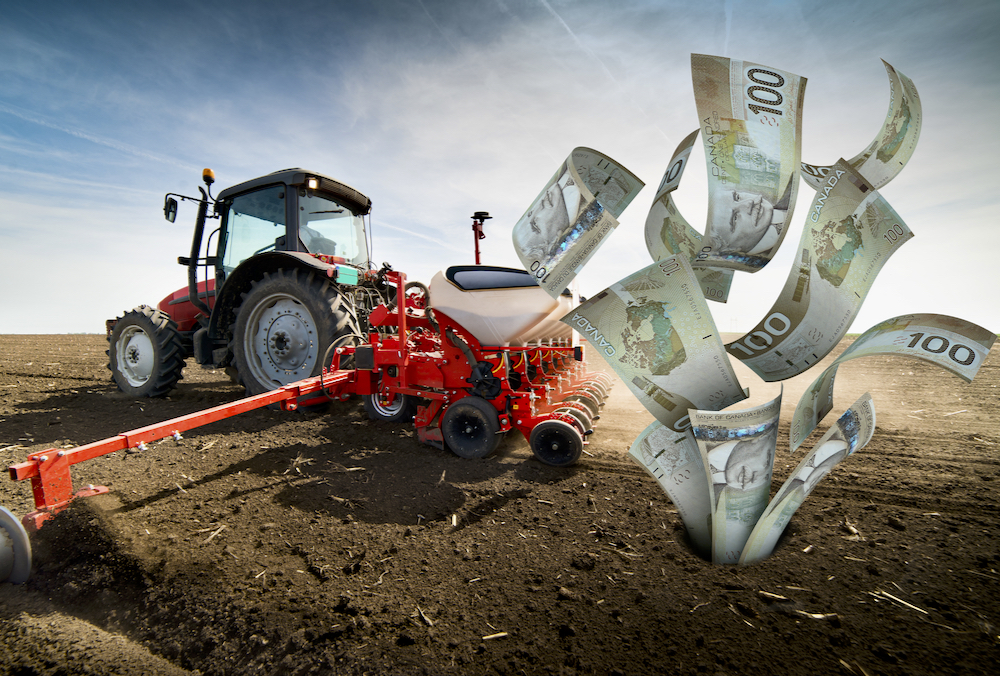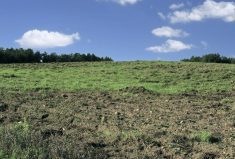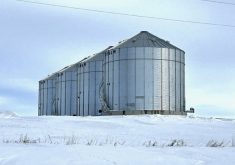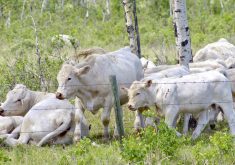Average Manitoba farmland prices were up 6.4 per cent in the first half of 2023, slightly below the Canadian average increase of 7.7 per cent.
The data, released in an Oct. 3 Farm Credit Canada (FCC) report, shows the province following the national trend. Analysts say the rate of increase is starting to ease.
“When you look at the average increases, the increases are higher for the lower-priced land value areas, and when you look at the higher-priced lands, you’re seeing less of an increase when measured in percentage terms,” said FCC chief economist J.P. Gervais.
Read Also

Finally getting paid for sustainable farming?
Alberta project says they might have a line on a workable ecosystem credit model to reward farmers for sustainability, and Manitoba might be next
Why it matters: There’s no relief on land prices, although slowing rates of growth suggest that appetite has dropped in higher-priced areas.
That state of affairs is reflected locally. In comparing land price and increases across the province, eastern Manitoba and the central Manitoba-Pembina Valley have both highest average prices and the lowest growth. That also holds true if numbers are run for the last year rather than just the last six-month period.
However, Manitoba bucked trends in another area of the financial analysis. Gervais singled out Manitoba as one of only two provinces (the other being Saskatchewan) that saw a significantly higher price increase in the last 12 months (July 2022–June 2023) compared to the last calendar year.
Gervais said that is a function of the lower starting point for land values compared with other provinces, combined with a positive outlook for farm income.
“Values are still going up as a function of the limited available supply and a positive, confident outlook for the long term,” he said. “We had this rebound in 2022 production after a difficult 2021 year and that’s pushed up revenues at the end of 2022, early 2023.”
Overall cash receipts for the province were up 11 per cent in the first six months of the year, compared to the first six months of 2022, with grains and oilseeds up 23 per cent.

“A year ago, that was roughly flat because we had challenges with the 2021 crop that was marketed in the first six months of 2022,” said Gervais.
He also cited relief in the input markets, as those prices have softened since the astronomical highs of last year.
“Combined, I think that’s the reason why we have the increase that we have in Manitoba,” said Gervais.
The rest of the West
Alberta is where the data best matches Gervais’s economic intuition.
Farmland values in that province increased by three per cent over the first half of 2023 and six per cent over the last 12 months. That’s down significantly from 2022, when values jumped 10 per cent throughout the year.
“The pace of increase definitely seems to be slowing down in Alberta,” Gervais said.

However, FCC only looks at dry land in Alberta for its mid-year report.
“We don’t have enough transactions to accurately assess and measure the irrigated land markets,” Gervais said.
Alberta has roughly the same projected income increases as Manitoba.
“Cattle receipts are high, which is a positive given all the challenges with regards to drought, but if you look at cash receipts for grains and oilseeds, it is up 24 per cent,” said Gervais.
That increase, combined with a shortage of available land, has kept demand up, and high land prices have dampened the rate of rise.
“Land values still continue to go up, but at a slower rate of increase,” said Gervais.
Saskatchewan had the highest land value jump of any province in the last six months at 11.4 per cent. It had similar growing conditions and income levels to the rest of the Prairies, but its proximity to Alberta makes it an outlier in the region, according to FCC.
“At the end of the day, Saskatchewan, in some areas, is still priced lower than it is in Alberta,” Gervais said. “I think buyers from outside the province might explain why demand seems to be a little bit higher.”
Ontario
Ontario’s 6.9 per cent increase in land values so far in 2023 was in line with the national average, and only slightly higher than Manitoba, but the reasons are starkly different, says Gervais.
“In Ontario, there are definitely fewer transactions. It’s one of the critical aspects we’ve seen. There’s no way for us to be aware of 100 per cent of the transactions, but the bottom line is that there is a significant decline.”
Another contrast with its western neighbours is that Ontario has seen a decline rather than a significant year-over-year increase in farm incomes.
“For the first six months, grain and oilseed producers have seen a decline of three per cent in income,” said Gervais. “But that’s because the previous year was a really good year.”
In terms of farm income, Ontario had healthy years in 2021 and 2022, particularly for grains and oilseeds, but it also dodged the production challenges experienced on the drought-riddled Prairies.
“Higher interest rates and somewhat flat income for the first six months of 2023 explain why we’re seeing lower numbers for Ontario compared to what it was the previous 12 months,” Gervais said.
There is a wide range of pricing across the province, with the southwest, central west and southeast regions leading in price per acre.
The wider view
British Columbia had no increase in farmland values in the first six months of the year. Again, FCC cited the already high cost of agricultural real estate in the province.
Farther east, at 10.6 per cent, Quebec saw the second highest growth rate in Canada over the last six months, with a high degree of variability across its regions.
FCC did not provide data for the Atlantic region due to limited sales in its database.
The ever-decreasing supply of available land seems to be a common theme nationwide.
“Supply stands out to me as one of the things that we don’t talk about nearly enough and document nearly enough,” said Gervais. “When there is limited supply, there are limited options.
“A buyer looking at something available now might pull the trigger because it may not come back on the market for 40 years or so.”
Measuring interest
Interest rates are another repeat topic in the FCC analysis.
Canada has seen several increases in the Bank of Canada rate over the past year, and Gervais said farmers shouldn’t expect any decrease in the short term.

“We’ve changed our forecast a bit recently. We pushed it later into 2024. We think there’s not going to be any relief from the Bank of Canada until very late in 2024. The battle against inflation isn’t over.”
Gervais said he expects the central bank to raise its overnight policy rate by another 25 basis points either later this year or early in the new year.
“[Rates] might not go much higher than they are now, but they will certainly stay where they are for a while,” he said. “There’s more that needs to be done here to bring inflation down to two per cent.”
















